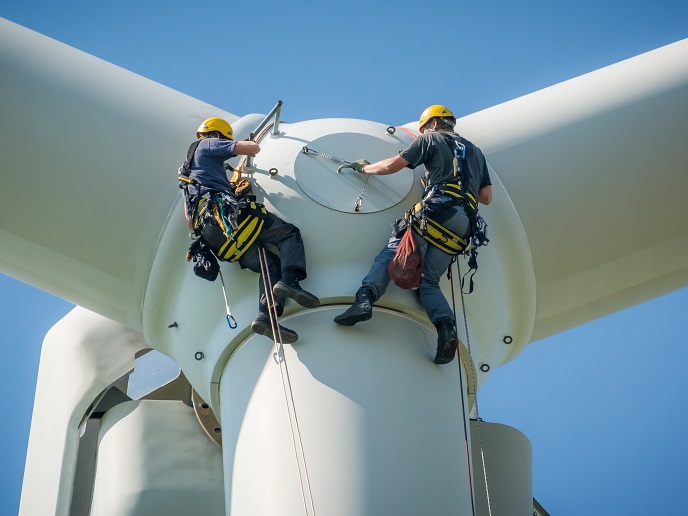How do we decide where to build wind farms?
From the coast of Ireland down to the islands of Greece, the European landscape is dotted with wind turbines delivering clean renewable energy. While the industry is constantly innovating, deciding where these turbines should be built remains a complex and time-consuming process. “There are many, many challenges to overcome before a wind project becomes a reality,” explains Meerts, technical lead at 3E, a renewable energy solutions provider in Belgium. “On the technical side, the big thing is defining resource uncertainty. Without defining this, you will never be able to finance a project.” In other words, it’s one thing to know that a particular hill is exposed to a lot of wind, but another to know that the project is profitable over the long term. This is what banks and investors require before they commit to a major wind farm project.
A complex selection process
The first step of the selection process – the pre-feasibility stage – usually involves drawing up a shortlist of potential locations. This is done based on wide-ranging criteria, from the distance of the site to the power grid and nearby houses, to taking into consideration environmental concerns. Once this list has been whittled down, the feasibility study proper can begin. This can cost anything in the region of EUR 500 000 to EUR 1 million. Geotechnical and environmental experts, as well as hydrological and topographical support, will be called in to provide a more detailed understanding of the location. But what about the most important element? “The measurement campaign is a part of this,” says Meerts. “This involves placing a wind measuring device on-site and waiting a year to collect the data. This gives developers a fairly good idea of wind power, from which they can start modelling and establishing resource uncertainty.” Meerts points out that establishing the amount of wind a location has is just one aspect of the process. Other constraints include ensuring compatibility with environmental regulations, monitoring biodiversity impacts and taking into account public opinions. What’s more, every country’s infrastructure, legal system and ability to access data differ.
Leveraging data to plan wind farms
The good news is that computing advances have created new opportunities in recent years to leverage more data. This could lead to the development of more accurate models and provide clarity on risk. If this removed the need to spend a year at potential sites gathering wind data this would lead to significant savings – and potentially lead to more wind farms receiving the green light. One example of innovation here is the Virtual Met Mast. This automated solution for generating wind resource data and analytics was developed through the EU-funded WindSider project. It leverages meteorological data that has been collected over the past two decades. By combining numerical modelling with deep learning and cutting-edge Earth observation data from Copernicus Sentinel Missions, the Virtual Met Mast generates long-term wind data. The idea is that developers can use this information to analyse more sites, mitigate missed opportunities and optimise projections faster than ever before. “There is still a lot of work to be done, but the value of public research projects such as this is that they encourage industry to come together for a common objective,” adds Meerts. Click here to find out more about Meerts’ research: Generating reliable wind data with AI and the cloud.



